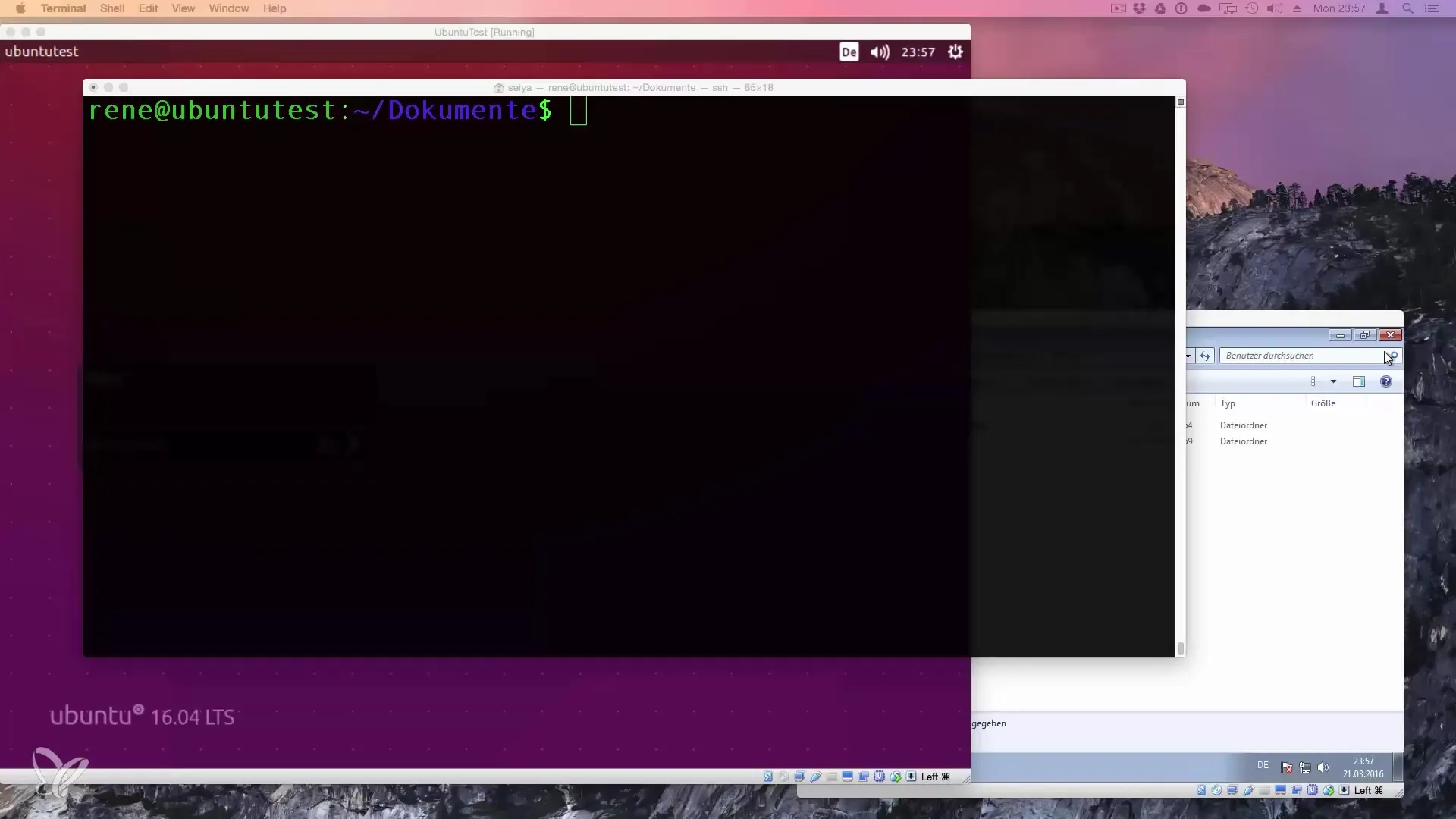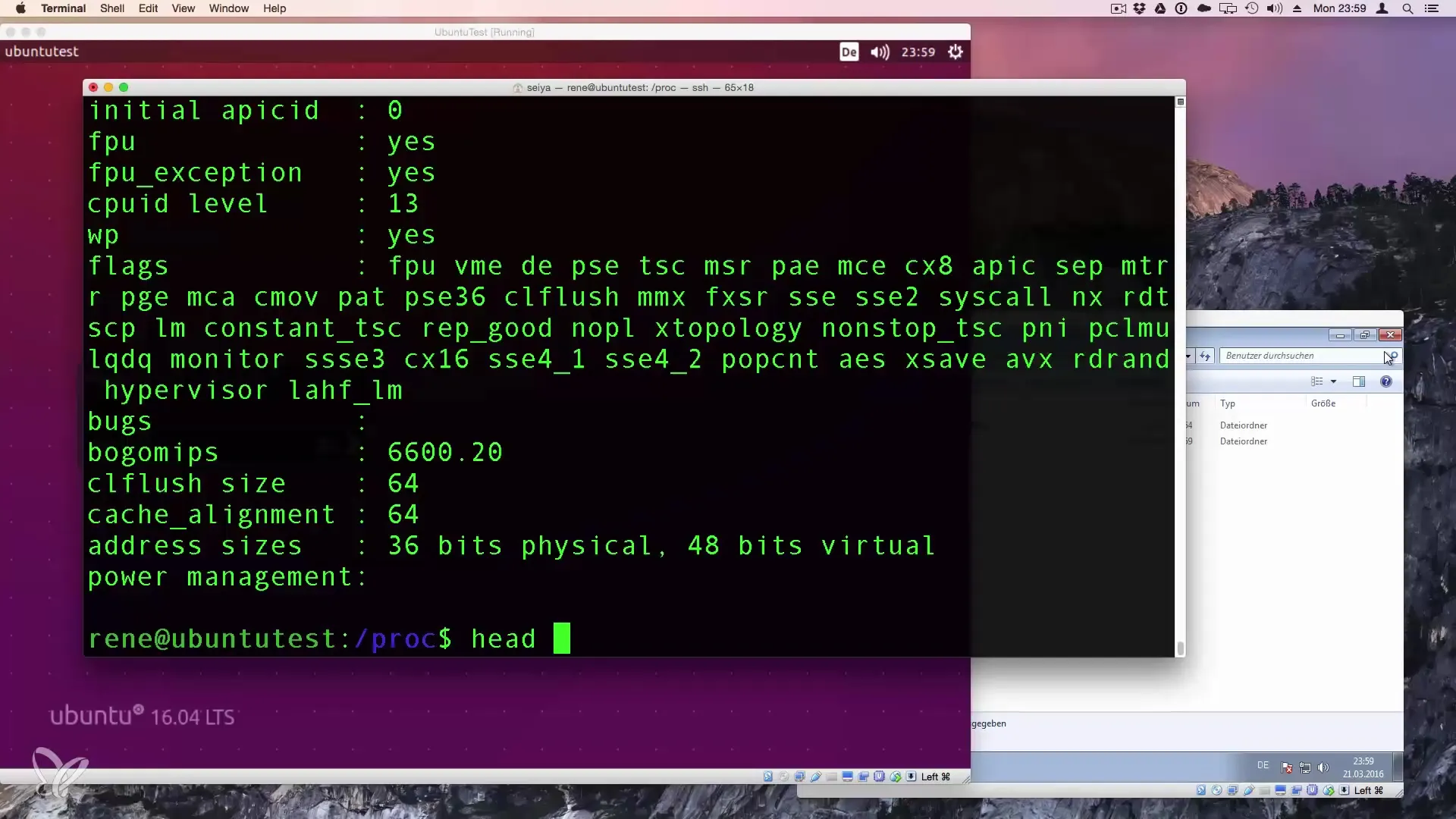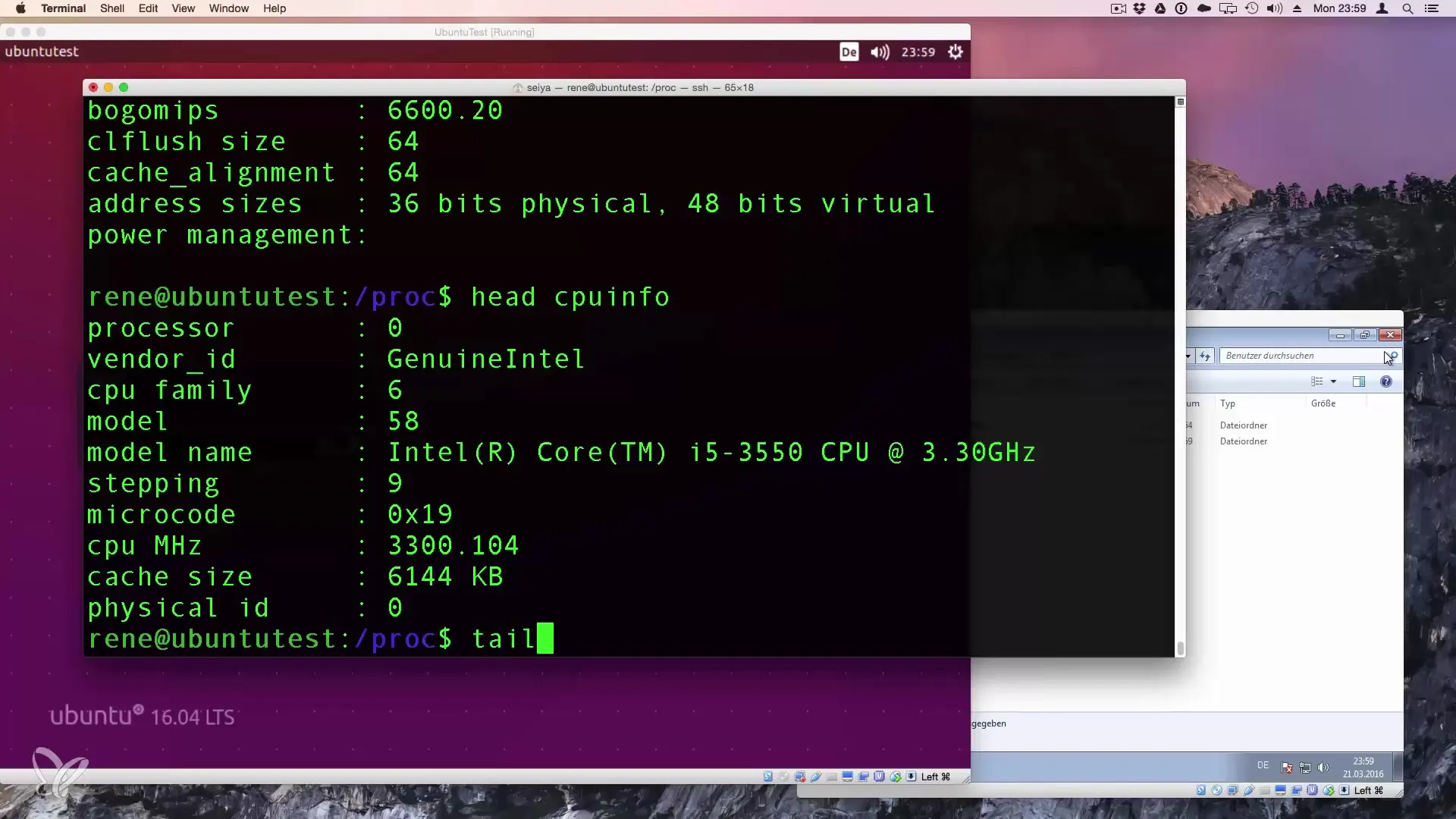If you are working with Linux, you often need to check the contents of files without editing them right away. This is where the commands cat, tail, head, and more come into play. They allow you to quickly and easily gain insight into the contents of text files. In this guide, you will learn how to effectively use these four commands to extract relevant information and check if certain files are significant to you.
Key Findings
- With the command cat, you can display the entire content of a file.
- The command head shows you the first lines of a file.
- To view the last lines of a file, you use tail.
- The command more allows you to scroll through large files page by page without editing them.
Step-by-Step Guide
First, you should be in the command line of your Linux system. This application is commonly used to execute commands and manipulate data efficiently.
1. Display the contents of a file with cat
To display the entire contents of a file, you use the command cat. Let's say you have a file named Testdatei that you want to output.
This command will display the entire content of the file in the terminal. If you have long files, this may take a while, as the complete content is outputted.

2. Check the first lines of a file with head
If you only need the first lines of a file, head is the right tool. With head, you can display a file up to the first ten lines:
This gives you a quick overview of the content of the file without having to scroll through everything. You can also specify specific lines if you want more or less than the default amount by appending -n:

3. Display the last lines of a file with tail
To see the last lines of a file, the command tail is useful. This could be interesting for log files, for example. Here’s an example:
Like head, you can also adjust the number of lines here:
This will give you the last three lines. This is especially helpful if you want to check the most recent entries or changes in a file.

4. Browse large files page by page with more
If you have a particularly long file, it is often clearer to go through it page by page. The command more allows you to browse a file step by step:
Every time you press the Enter key, you move down one line. With the spacebar, you jump a whole page forward. To terminate the process, just press Q.

This method is particularly helpful for monitoring files that are live updated, such as log files, without having to open them in an editor and potentially blocking changes.
Summary – Viewing Almost All File Contents Efficiently with Linux Commands
In this guide, you have learned how to use the commands cat, head, tail, and more to efficiently extract information from files. Each of these commands has its specific use to make your everyday life in the Linux environment easier.
Frequently Asked Questions
How can I display the entire contents of a file?With the command cat filename, you can output the entire contents of a file.
How do I display only the first five lines of a file?Use the command head -n 5 filename to check the first five lines.
What do I do if I only want to see the last three lines of a file?Use the command tail -n 3 filename to display the last three lines.
How can I navigate through an extremely long file?The command more filename allows you to view the file page by page. Press Enter for one line or space for one page.
How do I stop the view in the more command?Just press the Q key to exit the command.


